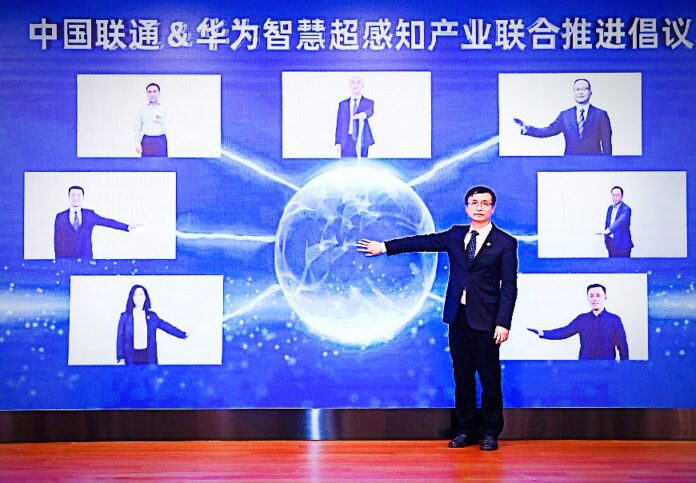China Unicom and Huawei have embarked on a research and development initiative to explore ‘smart super sensing’ in 5G networks. The technology seeks to leverage the multi-antenna architecture and high bandwidth capacity of 5G networks. It is pegged for usage with low-altitude drones, transportation, and digital twins, said Huawei. Its introduction will “speed up the industrial transformation towards intelligent operations,” it said.
The pair said they are working already on the technology – defined as 5G-Advanced, and marketed as (“the most imaginative approach towards”) 5.5G – with unnamed industry partners, specifically looking at “drone track detection” and “road sensing”; the latter is presumably related to smart-city concepts like intelligent transport systems, autonomous vehicles, and 5G-based vehicle-to-everthing (V2X) scenarios. They will explore further use cases, they said.
The ‘smart super sensing’ concept introduces new sensing capabilities into traditional wireless networks, and “breaks the limits of cellular networks,” said Huawei in a statement. It went further: “It supports the reconstruction and convergence of the physical world with the digital world and enables [a] metaverse and intelligent connection of everything.” Who knows what that really means, but the pair are looking to standardize their work.
China Unicom said it will work with 3GPP and CCSA (China Communications Standards Association) in China. “[We are] calling… for standardization in 5G integrated sensing and communications to build an ecosystem for the smart super sensing industry,” a statement said. China Unicom will also work with ‘vertical’ partners on “all aspects of the ecosystem” to define requirements and develop an application platform.
The deal on 5G super sensing was announced last week at China Unicom’s Global Industry Chain Partners Conference and Technology Innovation Summit Forum in China; it followed proposals back in May that the pair would collaborate on three “visions” for the technological development of 5G-Advanced / 5.5G, including also around “smart new vision” and “smart high uplink”.
The pair have started testing on these concepts already, they said, with “valuable results”. China Unicom is in the process of opening a series of “experimental R&D environments for innovations in cloud, networks, devices, edge, and applications” in China, where all three tech developments will be pursued.
Ma Hongbing, general manager of its technology innovation division, said: “Our goal is to make smart super sensing a reality. We hope that all industrial partners can explore the application scenarios with us and advance smart super sensing to new heights in the 5G industry… [5G-Advanced] will enable more application scenarios, which will drive the development of smart transportation, IoV, and drone management.”
A statement described the new drone and road cases, as follows: “With smart super sensing, low-altitude drones can better support low-altitude security and flight operation. Drone defense and detection have become a basic security measure for airports and energy and chemical plants as well as large-scale events and will create an industrial space of tens of billions of CNY in China in the next few years.
“5G integrated sensing and communications will emerge as a new technology that will enable industry users to solve many of the current technical problems. This will push industry partners to actively participate in industry innovation and accelerate the construction of an industry ecosystem.
Leading transportation has been prioritized as a major national strategy in China as it aims to achieve wide V2X coverage by 2025. Implementing precise road sensing as the foundation, however, still faces many challenges with respect to spectrum, performance, and cost in the deployment of sensing facilities.
5G networks are built with sensing capabilities, which improves the sensing performance and simplifies the deployment of roadside facilities, accelerating the development of smart transportation. We hope all parties in the industry will work with us to build an industry model and explore new ways to develop smart transportation.”

